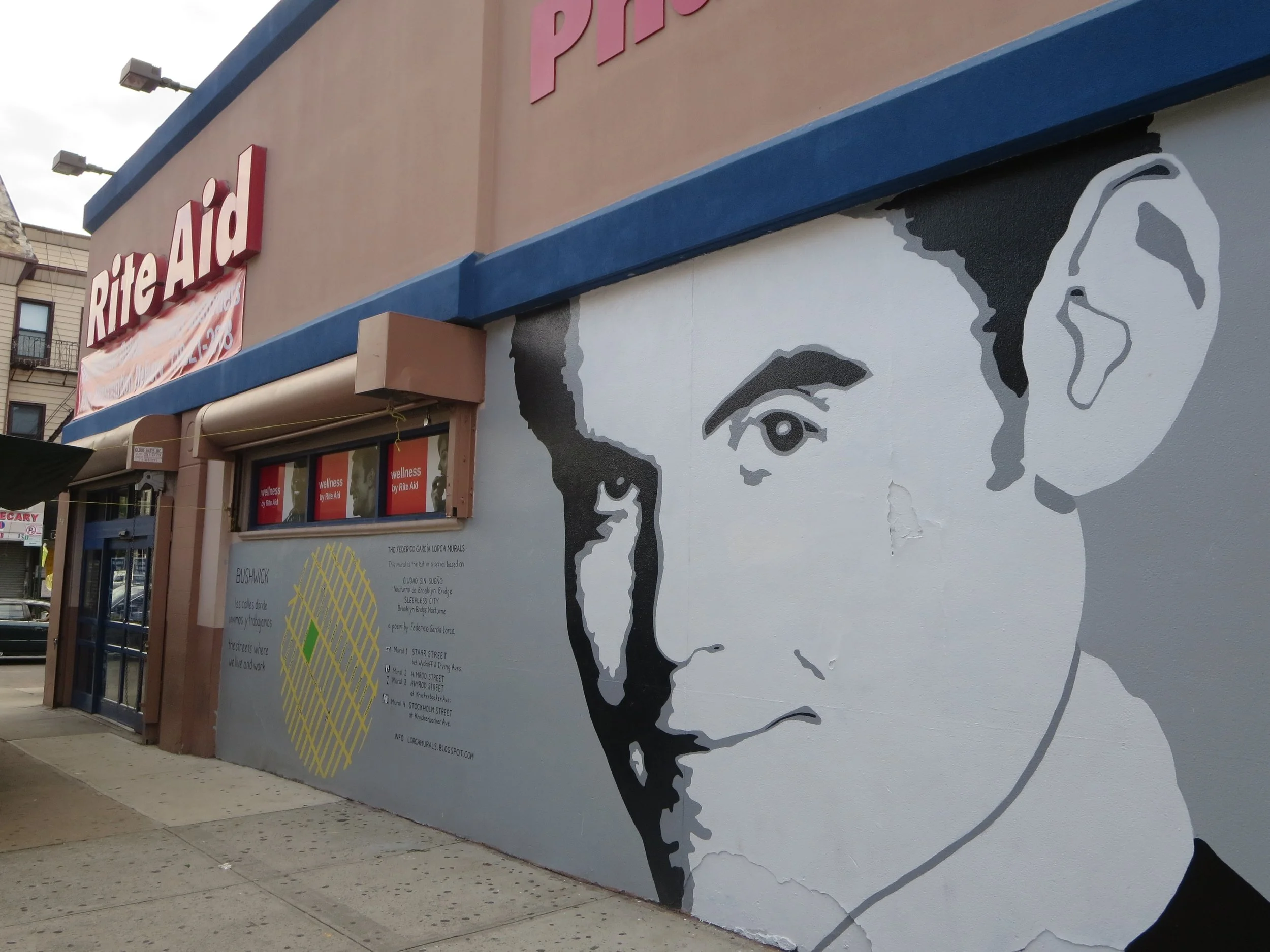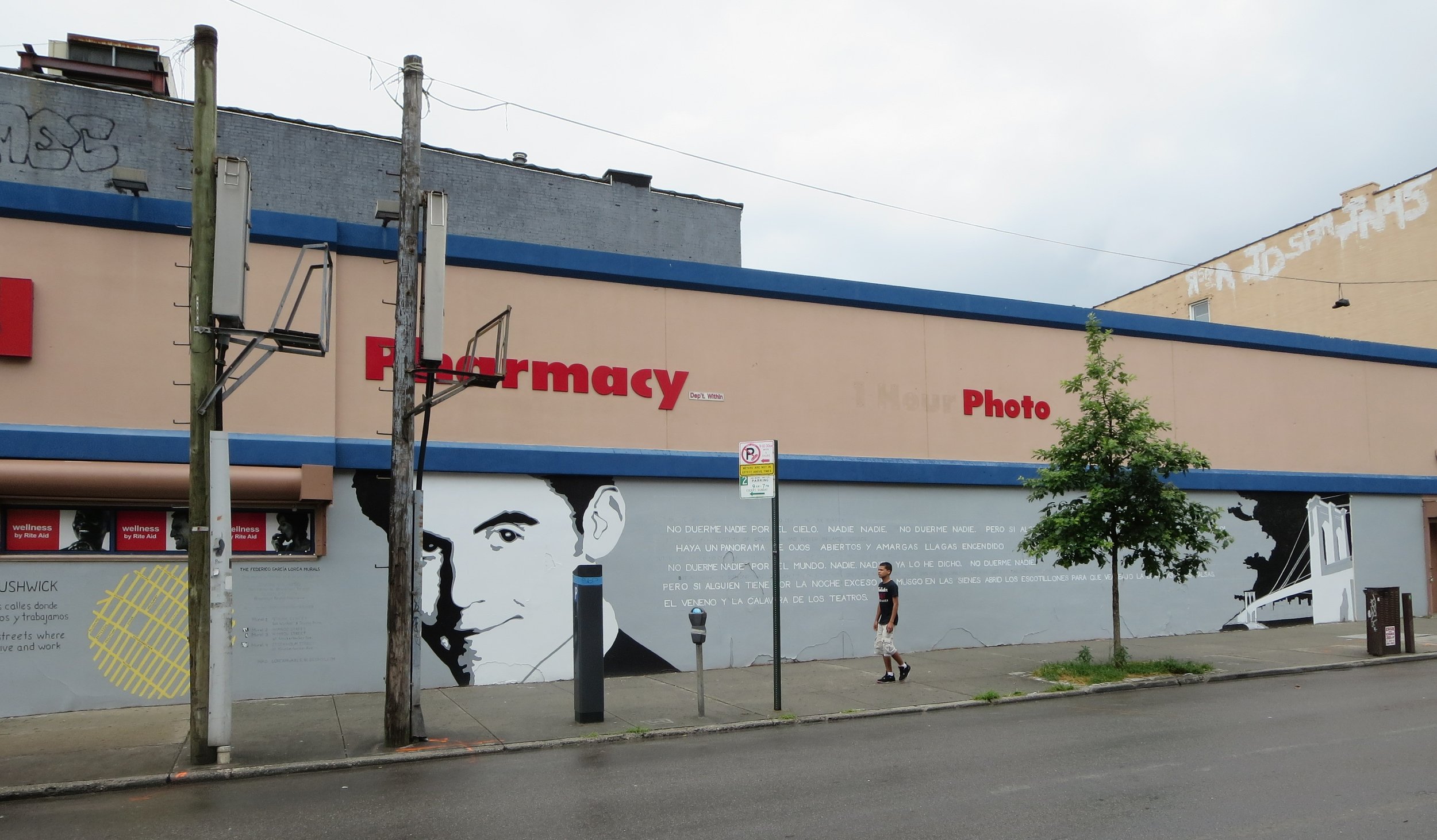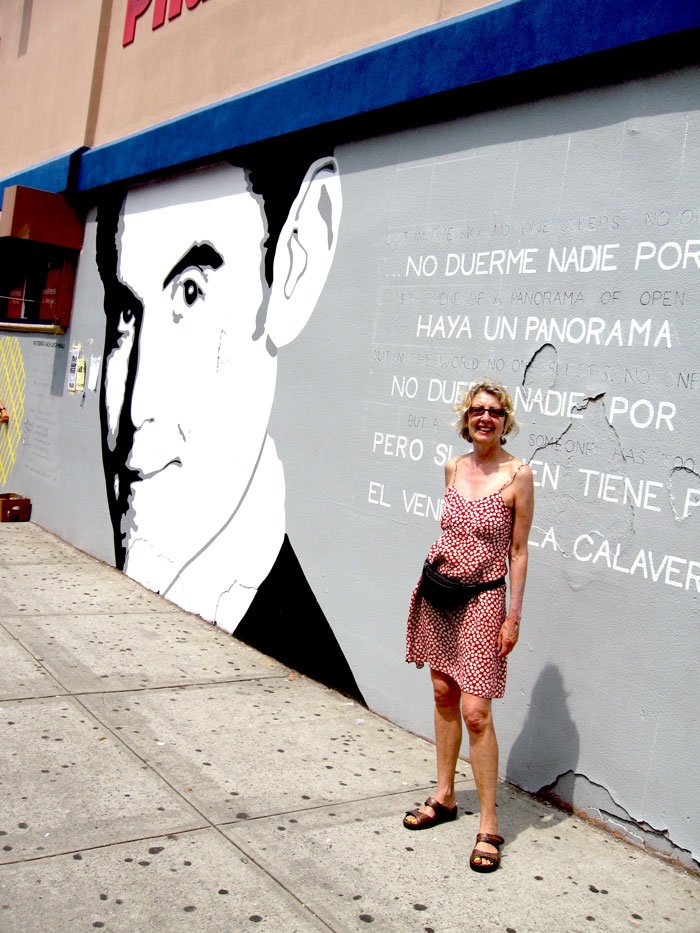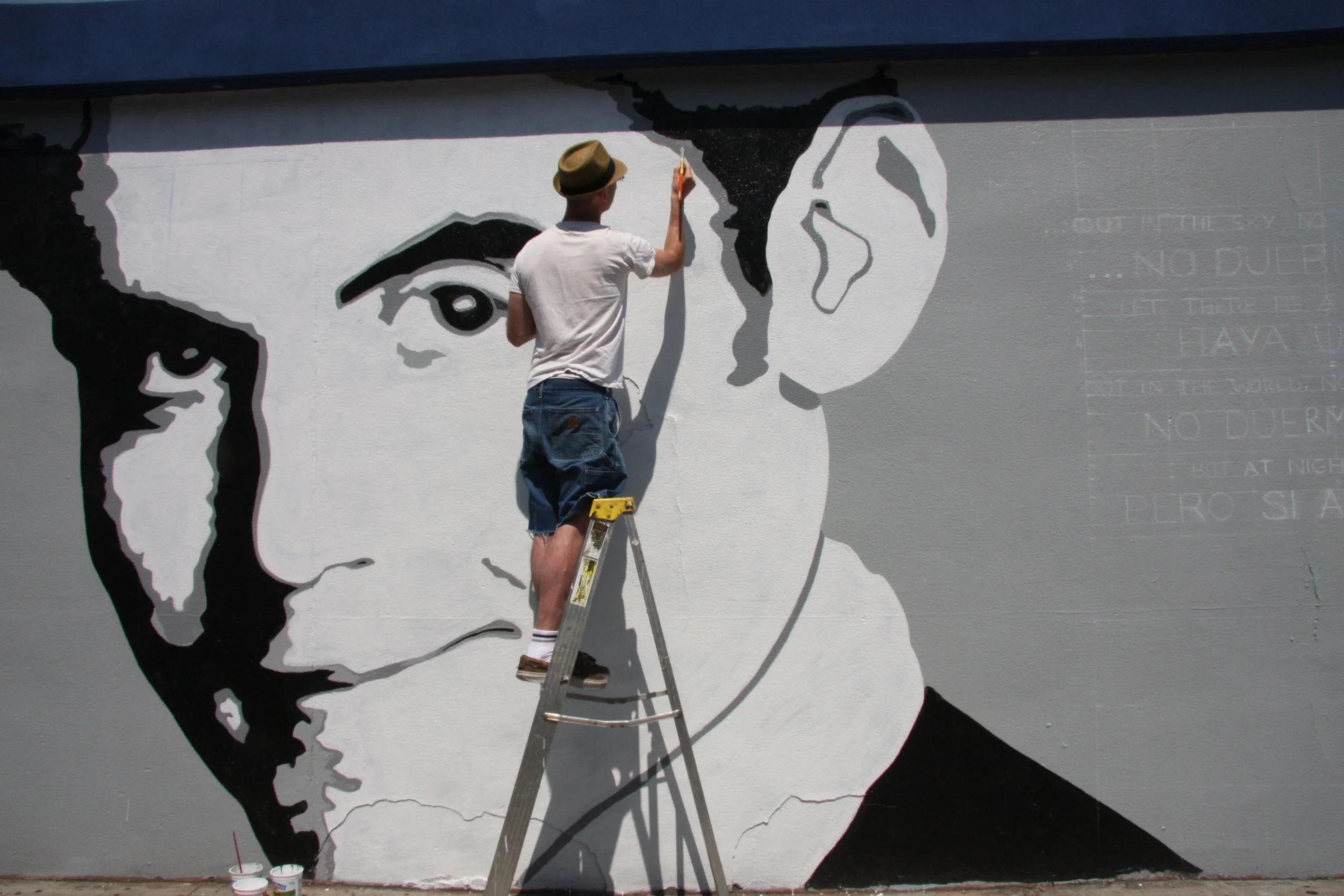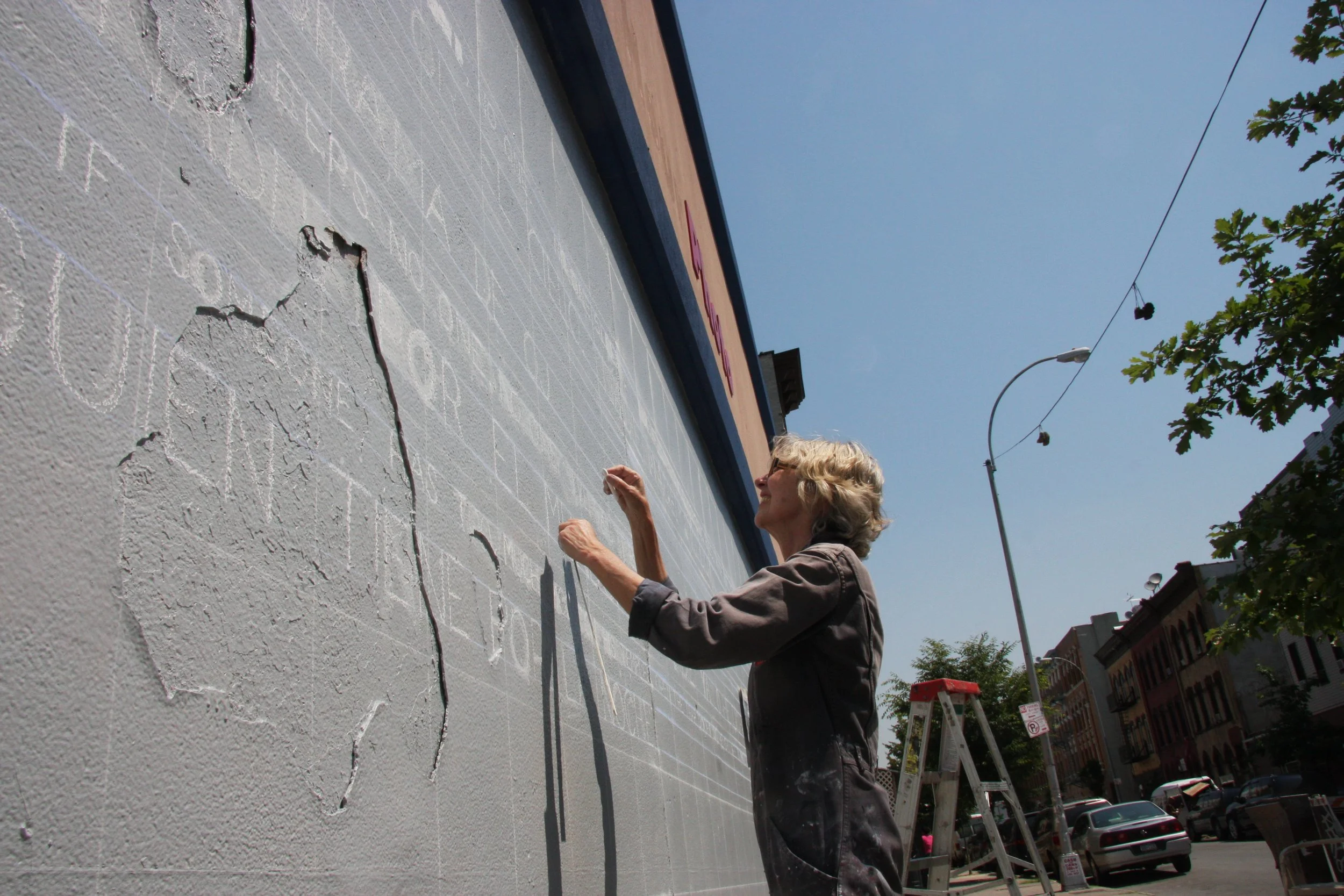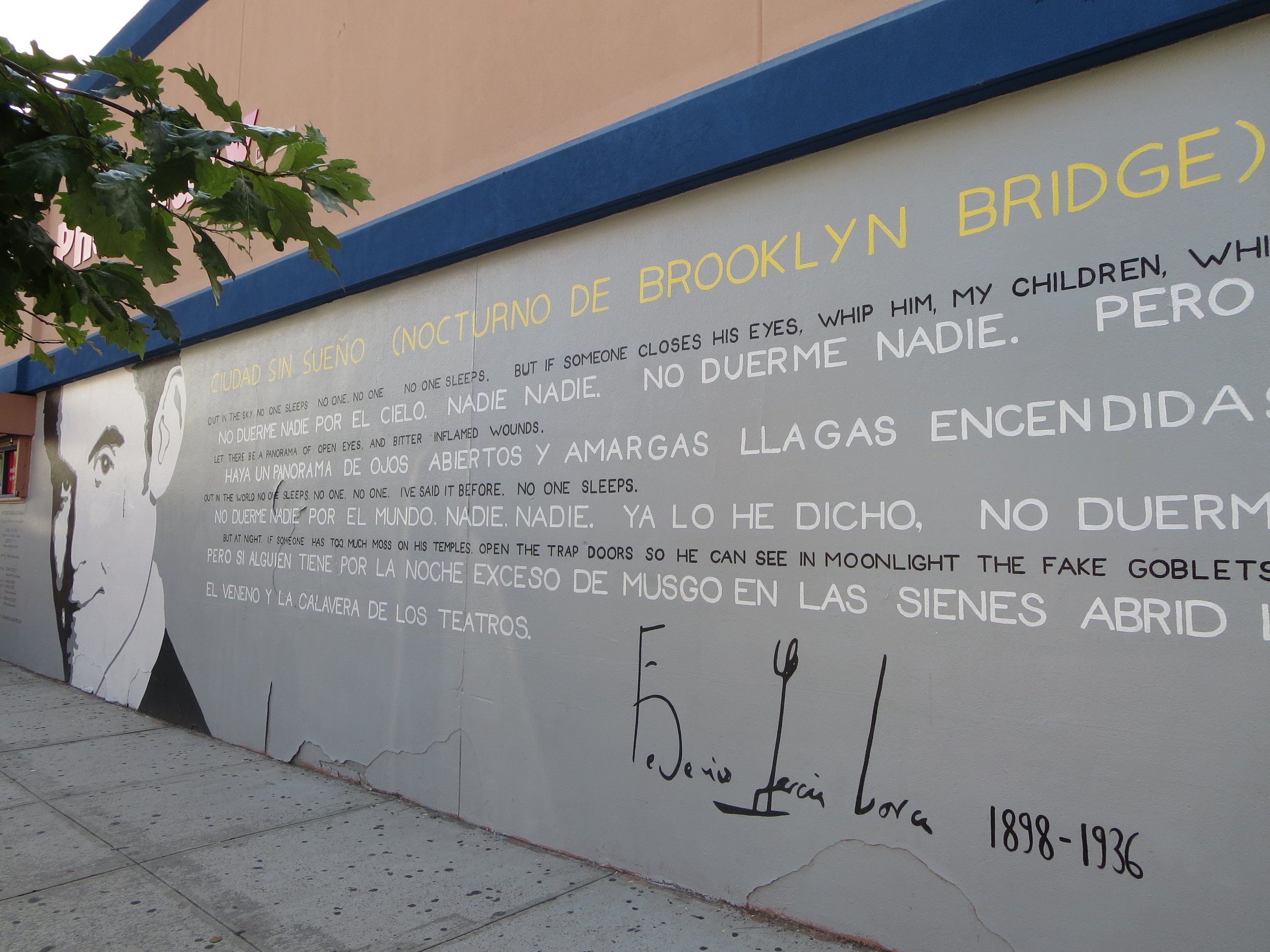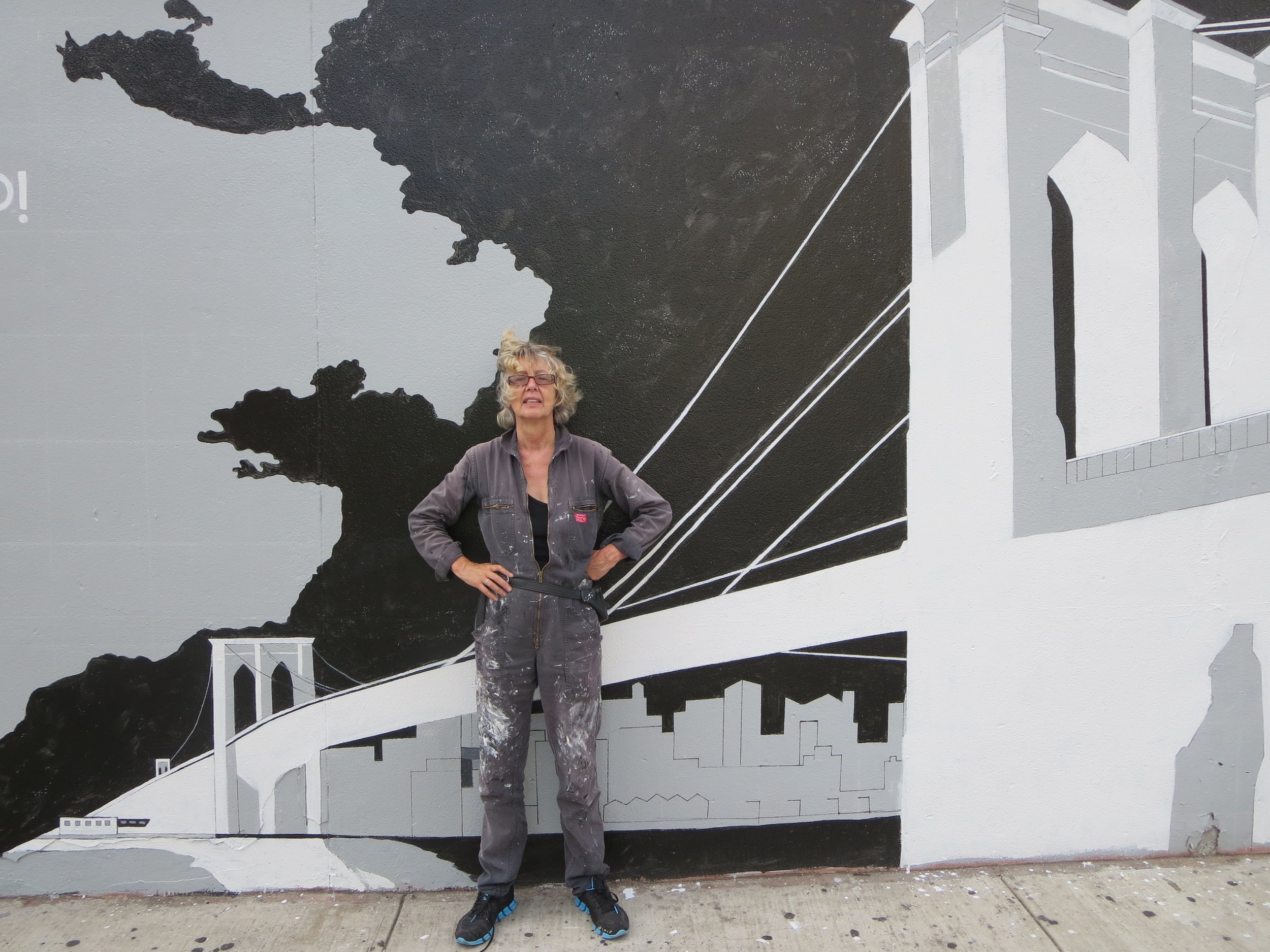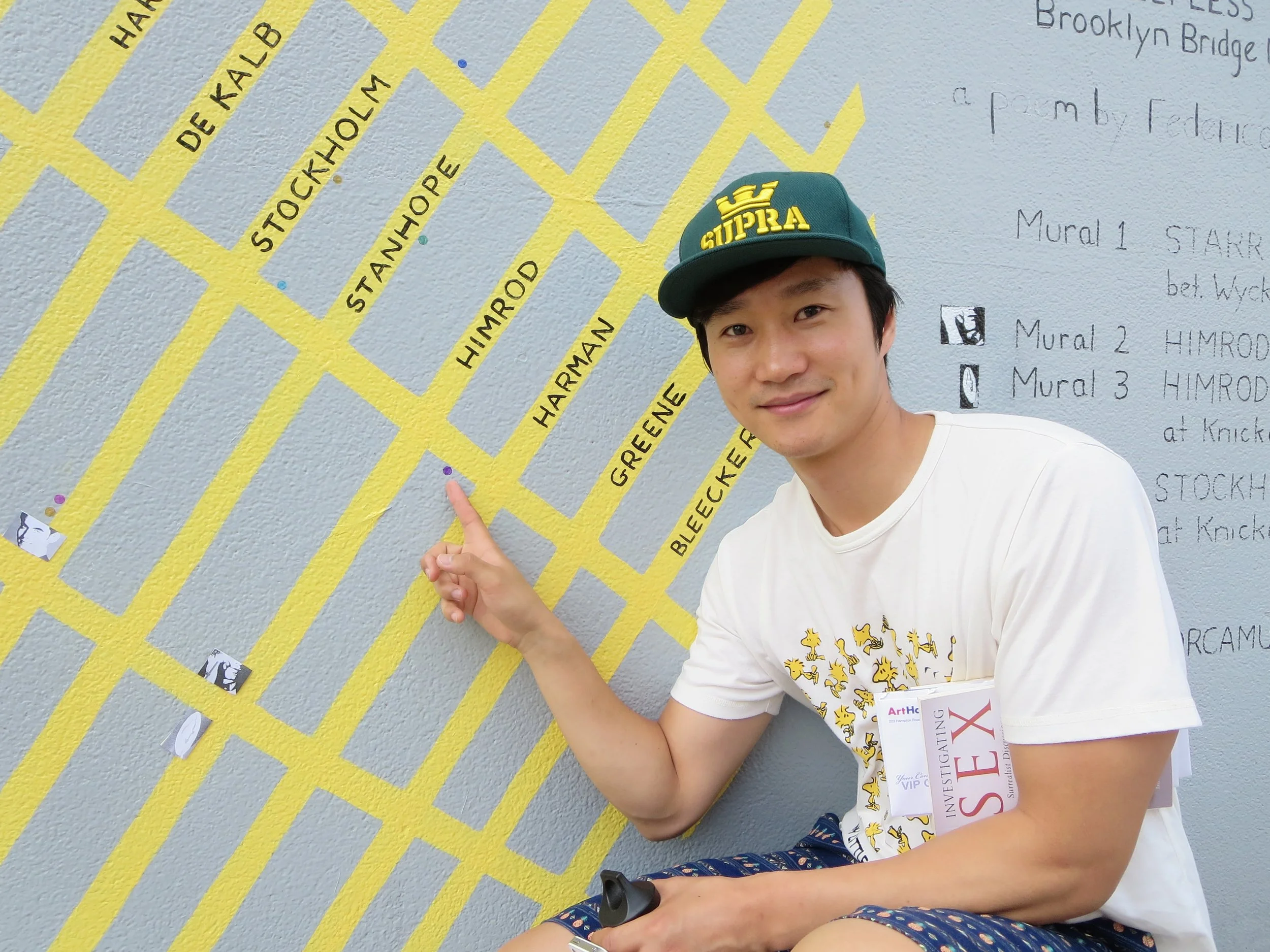FEDERICO GARCÍA LORCA MURAL #4 – CUIDAD SIN SUEÑO/NOCTURNO DE BROOKLYN BRIDGE
2013
CAMILLE PERROTTET, designer/lead artist
JANE WEISSMAN, project coordinator/artist
Principal Artists: Jules Hollander, Kayla Welbanks.
Artists: Hagar Aviran, Paul Hollander, Nick Pelafas, Galen Weiser, Michael Weiser, Nathan Weiser, Evan Welbanks
Stockholm Street at Knickerbocker Avenue, Brooklyn, NY
10’ x 79’, acrylic on concrete
Photos © Jane Weissman, Kyla Welbanks
This is the fourth and last of The Federico García Lorca Murals – a three-year project begun in 2011 to celebrate the multiculturalism of the people of Bushwick, Brooklyn, a neighborhood primarily inhabited by people of Latino heritage as well as young emerging artists. The murals were inspired by the poem Sleepless City / Brooklyn Bridge Nocturne by Spanish poet and dramatist Federico García Lorca (1898-1936).
Each mural includes a stanza from Lorca’s poem, in both Spanish and English translations, as well as a feature of the poet’s face – his eyes (1), his lips (#2), an ear (#3). This final mural features Lorca's entire face.
Lorca lived in New York for nine months from June 1929 through March 1930, sharing the loneliness and alienation experienced by immigrants new to the city. These feelings are expressed in Sleepless City / Brooklyn Bridge Nocturne and his other poems written during this period and published as A Poet in New York (in 1940). Lorca saw much that was wrong with the city and his work is filled with surreal images that speak to ills that still exist today: slums, poverty, racism and violence.
If Artmakers initiated the Federico García Lorca Murals – most community murals are commissioned by neighborhood organizations wanting to impart a message to the local population – it was Bushwick’s residents and workers who determined a major design element of each mural. In murals #1, #2 and #3, the designs refer to countries of origin. Mural #4 includes a map of the surrounding Bushwick neighborhood with dots indicating where residents, who stopped by to chat, live.
The map also indicates all four mural locations to encourage people to seek out the entire cycle.
Additional photographs and information about The Federico García Lorca Murals can be found here. For Frankie Sitges-Sardà’s poetic rendering of the July 18, 2013 walking tour of all four murals, click here.

